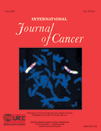Is there a folate-related gene-environment interaction in the etiology of childhood acute lymphoblastic leukemia?
Abstract
Acute lymphoblastic leukaemia (ALL) is the commonest childhood cancer in developed countries. Little is known about its causes, although its early age at diagnosis has focused interest on maternal and perinatal factors. We have previously observed a protective effect of maternal folate supplementation during pregnancy against ALL, and a number of studies have reported protective effects of some common polymorphisms of the methylenetetrahydrofolate reductase (MTHFR) gene. One study has suggested that the effect of MTHFR polymorphisms on risk of ALL may depend on folate status. This study aimed to look for evidence of an interaction between maternal folate supplementation and child's genotype among the cases from our previous study. Bone marrow specimens from 82 of 83 case children were available. DNA was extracted and genotyped for MTHFR C677T and A1298C using standard techniques. We used a case-only analysis to estimate the case-only odds ratio (COR) for MTHFR genotype and folate supplementation in association with ALL. None of the CORs indicated a significant departure from a multiplicative model. Adjustment for sex, age or genotype at the other locus had little effect on the results. Other studies of this gene and environment interaction in ALL and other cancers have produced contradictory results, perhaps because of varying definitions of folate exposure. Further research into the interaction of folate intake and genotype in causing ALL and other cancers is needed. We are specifically studying it in an Australian national case-control study of genetic and environmental causes of ALL. © 2006 Wiley-Liss, Inc.




